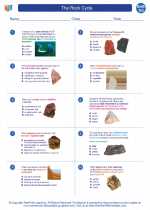Eskers
An esker is a long, winding ridge of stratified sand and gravel, typically found in regions that were once covered by glaciers. These ridges are formed by streams that flowed within or beneath the ice of a glacier. As the glacier melted, the sediment left behind by the streams formed the characteristic winding shape of an esker.
Formation of Eskers
1. Formation begins when a stream or river flows on, in, or under a glacier.
2. As the glacier melts, the sediment previously carried by the stream is deposited on the ice.
3. Over time, the ice melts away, leaving a winding ridge of sand and gravel known as an esker.
Characteristics of Eskers
- Typically long and winding
- Composed of stratified sand and gravel
- Can reach heights of up to 100 feet and extend for several miles
Significance of Eskers
- Provide valuable sources of groundwater
- Used as sources of construction materials
- Valuable for studying the glacial history of an area
Study Guide Questions
- What is the formation process of an esker?
- What are the characteristic features of eskers?
- How are eskers significant in terms of their impact on the environment?
- How can eskers be used to study the history of glaciation in a region?
◂Earth Science Worksheets and Study Guides High School. The Rock Cycle

 Worksheet/Answer key
Worksheet/Answer key
 Worksheet/Answer key
Worksheet/Answer key
 Worksheet/Answer key
Worksheet/Answer key
 Vocabulary/Answer key
Vocabulary/Answer key
 Vocabulary/Answer key
Vocabulary/Answer key
 Vocabulary/Answer key
Vocabulary/Answer key
